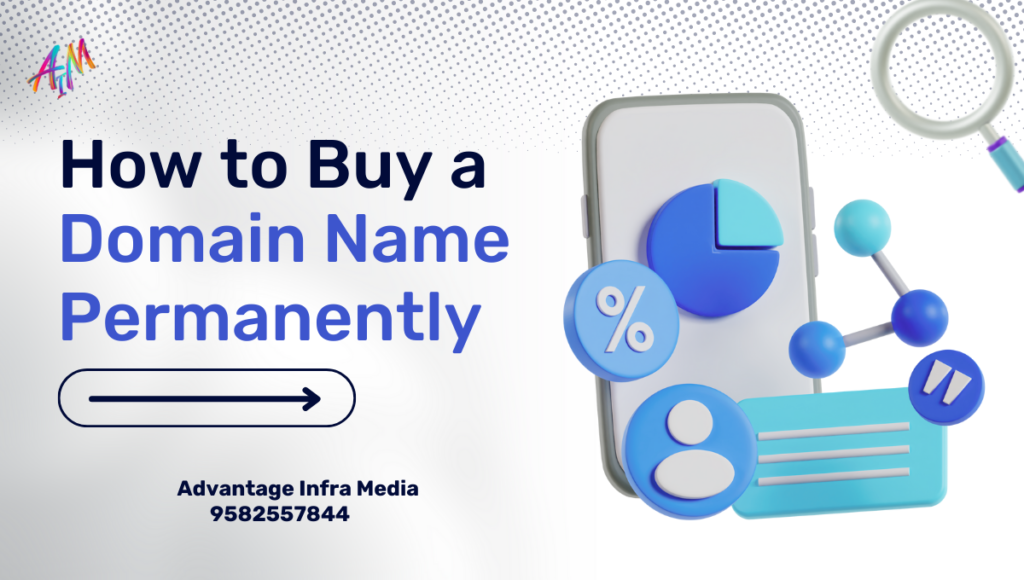How to Buy a Domain Name Permanently: A Comprehensive Guide in 2024
Introduction The digital era has made having an online presence essential for businesses, entrepreneurs, and individuals alike. One of the most crucial steps in establishing an online presence is securing a domain name that represents your brand or idea. While the idea of buying a domain name permanently might seem straightforward, the reality is that domain names are leased rather than purchased outright. This guide will walk you through the steps to secure and maintain as long as you need it. Table of Contents Understanding Domain Names What is a Domain Name? Importance of a Domain Name How Domain Names Work The Concept of Permanent Domain Ownership Is Permanent Ownership Possible? Domain Registration vs. Ownership Renewal of Domain Name Steps to Buy a Domain Name Step 1: Choose a Domain Name Step 2: Check Domain Availability Step 3: Choose a Domain Registrar Step 4: Register the Domain Name Step 5: Set Up Automatic Renewal Best Practices for Choosing a Domain Name Keep It Short and Simple Make It Memorable Avoid Numbers and Hyphens Consider SEO and Branding Check for Trademarks Different Domain Extensions and Their Implications Popular Domain Extensions (.com, .net, .org) Country-Specific Extensions (.us, .uk, .ca) Niche Extensions (.tech, .store, .blog) Managing Your Domain Name Domain Privacy Protection DNS Management Transferring a Domain Name Domain Name Expiration and Redemption Protecting Your Domain Name SSL Certificates Regular Monitoring Enabling Two-Factor Authentication Keeping Contact Information Updated What to Do If Your Desired Domain Is Taken Consider Alternative Extensions Use Domain Name Generators Buy the Domain from the Current Owner Legal Considerations and Dispute Resolution Common Mistakes to Avoid Failing to Renew the Domain Using a Registrar with Hidden Fees Ignoring Security Measures Not Considering Future Scalability Advanced Strategies for Domain Name Management Understanding the Legal Aspects of Domain Ownership Navigating the Secondary Domain Market Ensuring Domain Resilience and Continuity The Future of Domain Names Conclusion 1. Understanding Domain Names What is a Domain Name? A domain name is your website’s address on the internet, the unique string of characters that directs users to your site. For example, in the URL “www.example.com,” “example.com” is the domain name. It acts as a human-readable representation of the numerical IP addresses that computers use to identify websites. Importance of a Domain Name Your domain name is a critical aspect of your brand’s identity. It’s often the first impression users have of your business and plays a significant role in your online visibility. A well-chosen domain can enhance your marketing efforts, improve SEO, and make your site more accessible to users. How Domain Names Work When you enter a domain name into your browser, it sends a request to a network of servers called the Domain Name System (DNS). The DNS translates the domain name into an IP address, which tells your browser where to find the website’s server. The server then sends the website’s content back to your browser, which displays it for you. 2. The Concept of Permanent Domain Ownership Is Permanent Ownership Possible? In the domain industry, the concept of “permanent” ownership is a bit of a misnomer. Unlike tangible property, domain names are not bought outright. Instead, they are leased for a set period, typically ranging from one to ten years. However, by setting up auto-renewal and keeping your registration active, you can effectively maintain control over your domain indefinitely. Domain Registration vs. Ownership When you register a domain name, you’re essentially renting it from a domain registrar for a specific period. Ownership, in this context, means that you have exclusive rights to use the domain for as long as you keep up with the renewal fees. Renewal of Domain Name Domain names must be renewed periodically. Most registrars offer the option to set up automatic renewal, ensuring that you don’t accidentally lose your domain when the registration period expires. It’s important to keep your payment information up to date with your registrar to avoid any disruptions. 3. Steps to Buy a Domain Name Step 1: Choose a Domain Name The first step in buying a domain is selecting one that aligns with your brand or personal identity. Your domain should be easy to remember, spell, and type. Consider using keywords that are relevant to your business to improve SEO. Step 2: Check Domain Availability Once you have a name in mind, you’ll need to check its availability. You can do this through a domain registrar’s website or using online tools like WHOIS. If your desired domain is taken, consider slight variations or different extensions. Step 3: Choose a Domain Registrar A domain registrar is a company that manages the reservation of internet domain. Popular registrars include GoDaddy, Namecheap, and Google Domains. Choose a registrar that offers good customer support, transparent pricing, and added features like privacy protection. Step 4: Register the Domain Name After selecting your registrar and verifying that your desired domain is available, proceed with the registration process. You’ll need to provide some personal information, choose your registration period, and decide whether to add extra features like privacy protection. Step 5: Set Up Automatic Renewal To ensure you don’t lose your domain, set up automatic renewal. This feature will charge your payment method on file at the end of each registration period, keeping your domain active. 4. Best Practices for Choosing a Domain Name Keep It Short and Simple A shorter domain name is easier to remember and reduces the likelihood of typos. Aim for a name that is concise and straightforward. Make It Memorable Your domain name should be easy to recall. Avoid using complex or obscure words that might be difficult for users to remember or spell. Avoid Numbers and Hyphens Numbers and hyphens can be confusing when spoken aloud and are often mistyped. Stick to letters to minimize the risk of user error. Consider SEO and Branding Incorporating keywords relevant to your business can help with search engine rankings. However, balance this with creating a name that is also brandable and unique. Check for Trademarks
How to Buy a Domain Name Permanently: A Comprehensive Guide in 2024 Read More »
Blog









